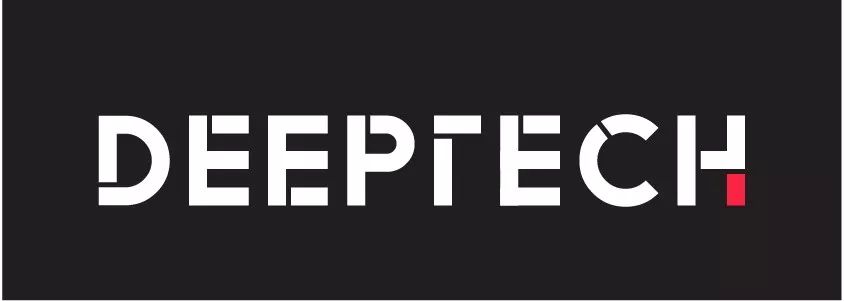Artificial Intelligence Ethics | China's "Artificial Intelligence Generation Synthetic Content Identification Method"
Artificial Intelligence Ethics | China's "Artificial Intelligence Generation Synthetic Content Identification Method"
Measures for the Generation of Synthetic Content of Artificial Intelligence On March 14, 2025, the State Internet Information Office, the Ministry of Industry and Information Technology, the Ministry of Public Security, and the State Administration of Radio and Television jointly issued the "Measures for the Generation of Synthetic Content of Artificial Intelligence" (hereinafter referred to as the "Measures for the Generation of Synthetic Content of Artificial Intelligence")
Methods for identifying synthetic contents in artificial intelligence
On March 14, 2025, the State Internet Information Office, the Ministry of Industry and Information Technology, the Ministry of Public Security, and the State Administration of Radio and Television jointly issued the "Measures for the Generation of Synthetic Content in Artificial Intelligence" (hereinafter referred to as the "Measures for the Generation of Synthetic Contents"), which will come into effect on September 1, 2025. A relevant person in charge of the State Internet Information Office said that the "Logination Measures" aims to promote the healthy development of artificial intelligence, standardize the generation of synthetic content logos of artificial intelligence, protect the legitimate rights and interests of citizens, legal persons and other organizations, and safeguard the public interests of society.
text
Article 1 In order to promote the healthy development of artificial intelligence, standardize the identification of synthetic content of artificial intelligence, protect the legitimate rights and interests of citizens, legal persons and other organizations, and safeguard the public interests of society, these Measures are formulated in accordance with the "Cybersecurity Law of the People's Republic of China", "Regulations on the Recommendation Management of Internet Information Service Algorithm", "Regulations on the In-depth Synthesis Management of Internet Information Services", "Interim Measures for the Management of Generative Artificial Intelligence Services", and other laws, administrative regulations and departmental regulations.
Article 2 Network information service providers (hereinafter referred to as "service providers") who comply with the circumstances stipulated in the "Regulations on the Recommendation Management of Internet Information Service Algorithm", "Regulations on the In-depth Synthesis Management of Internet Information Services", and "Interim Measures for the Management of Generative Artificial Intelligence Services" will carry out artificial intelligence generation and synthetic content identification activities, and these Measures shall apply.
Article 3 The content of artificial intelligence generation and synthesis refers to information such as text, pictures, audio, video, virtual scenes generated and synthesized using artificial intelligence technology.
Artificial intelligence generates synthetic content identifications including explicit and implicit identification.
Explicit identification refers to an identification added in the generated synthetic content or interactive scene interface, presented in text, sound, graphics, etc. and can be clearly perceived by users.
Implicit identification refers to an identification that is added to the data generated by technical measures and is not easily perceived by users in the production of synthetic content file data.
Article 4 If the generation and synthesis services provided by the service provider fall within the circumstances of Article 17, paragraph 1 of the "Regulations on Deep Synthesis Management of Internet Information Services", the generated synthesis content shall be added as follows:
(1) Add text prompts or general symbol prompts and other identifiers at the beginning, end or in the middle of the text, or add significant prompt identifiers to the interface of the interactive scene and around the text;
(2) Add voice prompts or audio rhythm prompts and other signs at the beginning, end or in the middle of the audio, or add significant prompt signs to the interactive scene interface;
(3) Add significant prompt signs to the appropriate location of the picture;
(4) Add significant prompt signs at the appropriate locations around the video start screen and video playback. You can add significant prompt signs at the end and middle of the video;
(5) When presenting a virtual scene, add significant prompt signs at the appropriate location of the starting screen, and add significant prompt signs at the appropriate location during the continuous service of the virtual scene;
(VI) Other generation and synthesis service scenarios add significant prompt marks based on their own application characteristics.
When the service provider provides functions such as downloading, copying, and exporting synthetic content, it should ensure that the file contains explicit identifiers that meet the requirements.
Article 5 The service provider shall, in accordance with Article 16 of the "Regulations on Deep Synthesis Management of Internet Information Services", add implicit identifiers to the file metadata that generates synthetic content. The implicit identifiers include information on the production element such as the attribute information of the generated synthetic content, the name of the service provider or the encoding, content number.
Service providers are encouraged to add implicit identifications such as digital watermarks to generate synthetic content.
File metadata refers to descriptive information embedded in the file header in a specific encoding format, used to record the source, attributes, uses and other information contents of the file.
Article 6 Service providers that provide network information content dissemination services shall take the following measures to standardize the generation and distribution of synthetic content:
(1) Verify whether the file metadata contains implicit identifiers. If the file metadata is clearly marked as generating synthetic content, appropriate methods should be used to add significant prompt identifiers around the published content to clearly remind the public that the content belongs to generating synthetic content;
(2) If the implicit identifier is not verified in the file metadata, but the user declares that it is to generate synthetic content, it shall adopt appropriate methods to add significant prompt identifiers around the published content to remind the public that the content may be generated synthetic content;
(3) If the implicit identification is not verified in the file metadata, and the user has not declared it to generate synthetic content. However, if the service provider providing network information content dissemination services detects an explicit identification or other traces of generation of synthetic content, it will be identified as suspected of generating synthetic content, and will take appropriate methods to add significant prompt identification around the published content to remind the public that the content is suspected of generating synthetic content;
(IV) Provide necessary identification functions and remind users to actively declare whether the published content contains generated synthetic content.
If there are any situations in the first to third items of the preceding paragraph, information on the generated synthetic content attribute information, communication platform name or encoding, content number and other communication element information shall be added to the file metadata.
Article 7 When an Internet application distribution platform is launched or reviewed online, it shall require the Internet application service provider to explain whether it provides artificial intelligence generation and synthesis services. If Internet application service providers provide artificial intelligence generation and synthesis services, the Internet application distribution platform shall verify the relevant materials for the generation of synthetic content identification.
Article 8 The service provider shall clearly state the methods, styles and other specifications of generating synthetic content identification in the user service agreement, and prompt the user to read carefully and understand the relevant identification management requirements.
Article 9 If a user applies to a service provider to provide generated synthetic content without explicit identification, the service provider may provide generated synthetic content without explicit identification after clarifying the user's identification obligations and use responsibilities through the user agreement, and retain relevant logs such as the provided object information in accordance with the law for no less than six months.
Article 10 If a user uses the network information content dissemination service to publish and generate synthetic content, he shall actively declare and use the identification function provided by the service provider to identify.
No organization or individual may maliciously delete, tamper, forge or conceal the generated synthetic content logos stipulated in these Measures, shall not provide tools or services for others to commit the above malicious acts, and shall not damage the legitimate rights and interests of others through improper identification.
Article 11 When a service provider carries out identification activities, it shall also comply with the requirements of relevant laws, administrative regulations, departmental regulations and mandatory national standards.
Article 12 When performing algorithm filing, security assessment and other procedures, service providers shall provide relevant materials for generating synthetic content identification in accordance with these Measures, and strengthen identification information sharing to provide support and assistance in preventing and combating related illegal and criminal activities.
Article 13 If any violation of the provisions of these Measures, the relevant competent departments such as Internet Information, telecommunications, public security, radio and television shall be dealt with in accordance with their duties and in accordance with relevant laws, administrative regulations and departmental regulations.
Article 14 This Measures shall come into effect on September 1, 2025.





